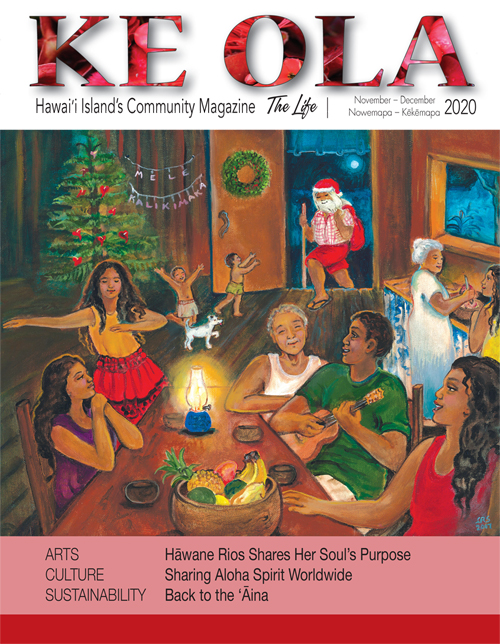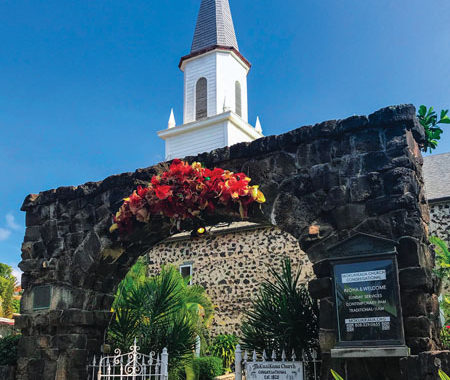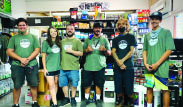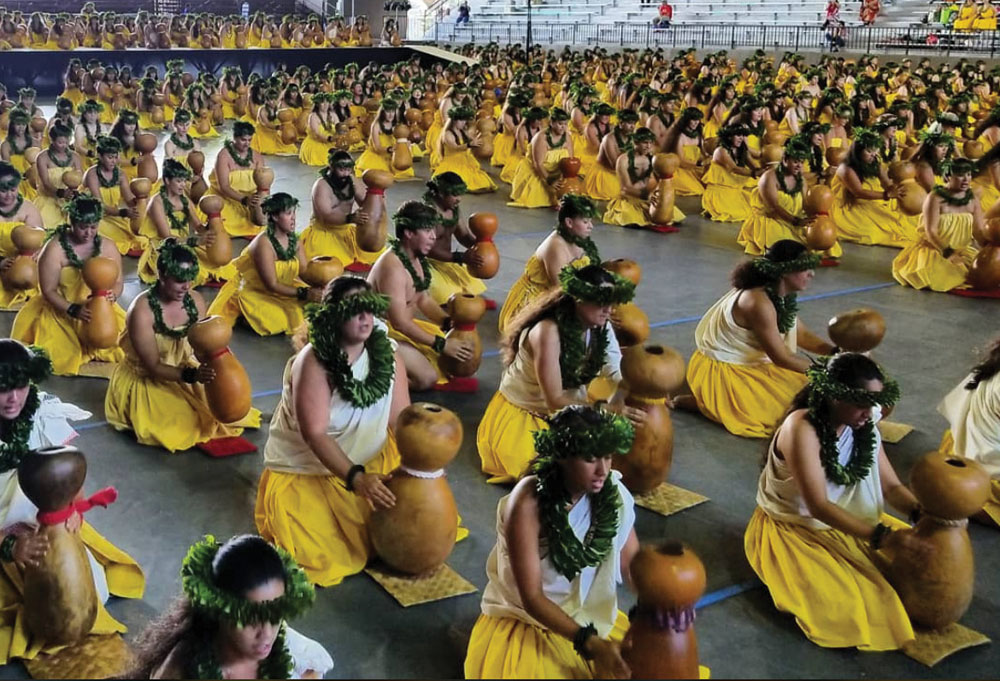
Sharing Aloha Spirit Worldwide

By Catherine Tarleton
What does Aloha Spirit look like in places outside of Hawai‘i? To find out, we asked an ipu (gourd) artist who grows them in both Kona and California, a kumu hula who teaches in Asia and Europe, and an IT tech/hula student in San Diego.
Their stories, some surprising, some funny, some “chicken-skin,” tell us that the culture, values, and spirit of Hawai‘i are both vast and infinite, personal and global. Something you need to feel under your feet, and also something you can carry like a honu (turtle) shell wherever you go.
Kamehameha Schools defines Hawaiian values as: “aloha (to have compassion and empathy); ‘imi na‘auao (to seek wisdom); mālama (to care for and protect); ‘ike pono (to know and do what is right); kuleana (to take responsibility); ho‘omau (to preserve and perpetuate); and ha‘aha‘a (to be humble).”
More informally, Hawaiian values might be things we love and value: family, including ancestral family, food, nature, and the culture and philosophy that hold it all together—whether we live in Hawai‘i or elsewhere.
Kalim Smith
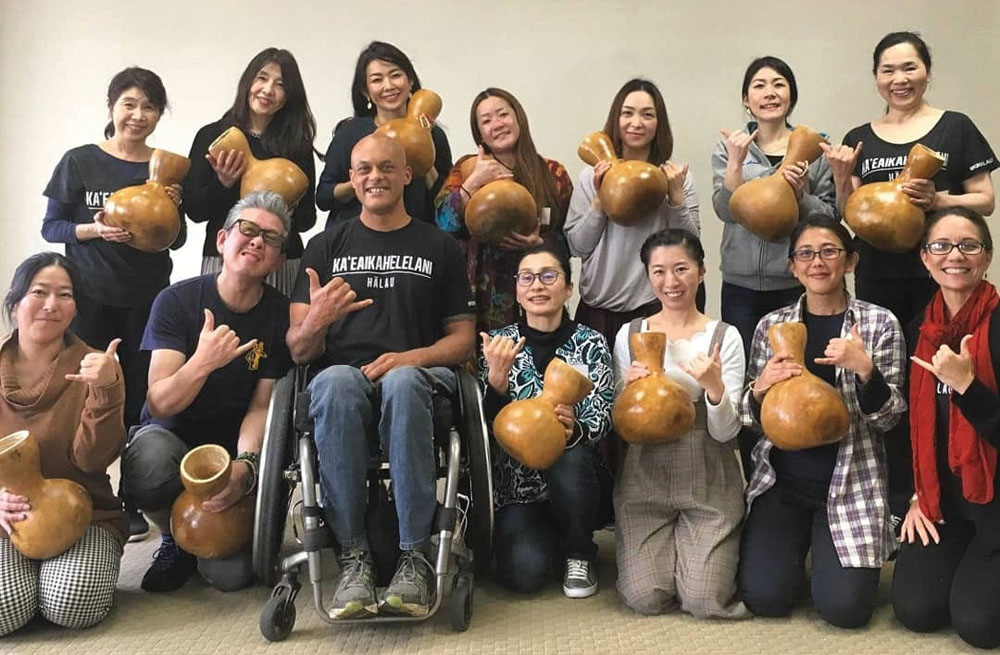
Kalim Smith grows ipu and makes traditional rhythm instruments in both San Diego and at Hālau Ka‘eaikahelelani in Keauhou. He’s created ipu heke (double gourds) and ipu heke ‘ole (single gourds) for some of Hawai‘i’s most prominent musicians, kumu (teachers), and dancers, including Keali‘i Reichel, Robert Cazimero, and many others. He also grows food crops and raises Hawaiian pigs—all of which he shares with the community.
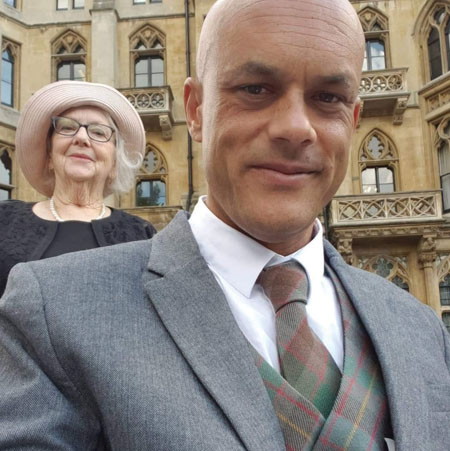
He holds two master’s degrees, in ethnic studies and anthropology, and was working on a PhD when a spinal cord injury “confined” him to a wheelchair. Indefatigable, it does not keep him from farming, traveling, swimming, skiing, teaching, or lifelong learning.
From an interracial family, Kalim has a strong interest in genealogy, and he was surprised to learn that he’s related to Hiram Bingham and Lorenzo Lyons. He’s also a member of the Sons of the American Revolution and a Mayflower descendant. “You can’t look at people in the moment. You have to look in a historical trajectory,” he says. “If you never ask, you never know they’re from somewhere else.”
“I feel like my day is a prayer. Everything I do in a day has to be to the benefit of mankind. I try to stay in a prayerful zone; it’s a very thankful, prayerful way of being. I try to be pono, and do what I can to help neighbors, to show you can still have a good day even in a wheelchair.”
“DNA is like a time traveler, traveling with you,” he says. “Who you come from generally plays into who you are. The more I learn about family, the more comfortable I am in my own life…Genealogy is a scientific endeavor. The genealogy of certain animals goes all the way back to creation. Hawaiians were genealogists of the universe. They studied the origins of not just family but all things.”
In August 2019 he traveled up Mauna Kea to present some ipu heke to the community for ceremony. “This place is Hawai‘i, if you are in Hawai‘i you have to go with what’s Hawaiian,” Kalim says. “The Mauna is where I go for meditation, because of the mana [spirit] of the place.”
Keala Ching
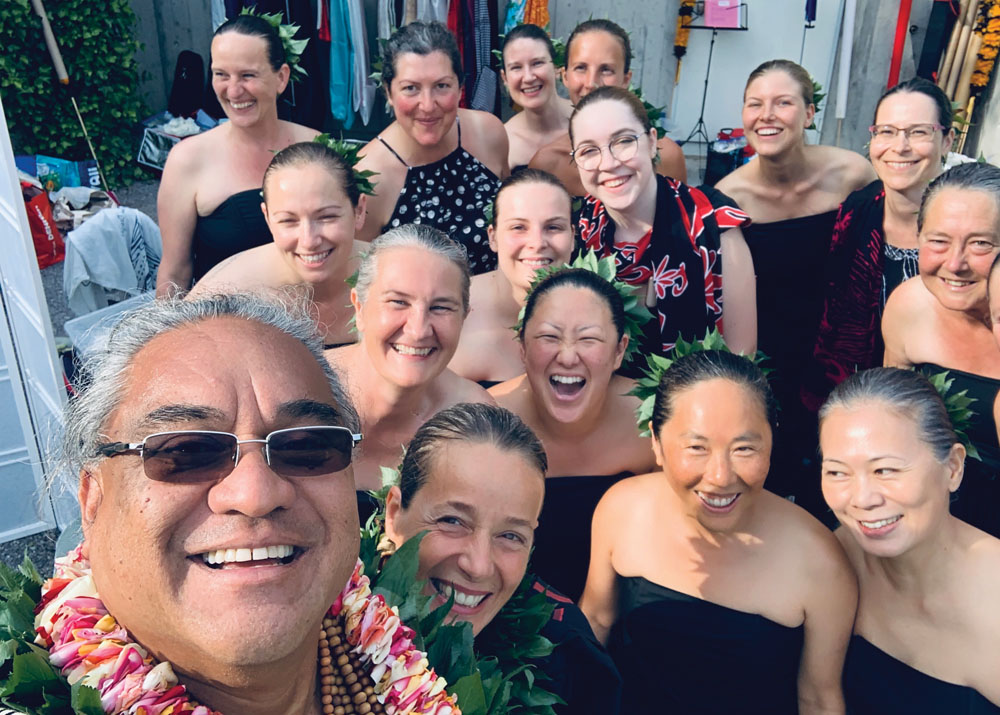
Kumu Keala Ching is a familiar face, and voice in the Ke Ola family, where his beautiful Hawaiian oli appear at the beginning of each issue. A dedicated student of Hawaiian culture, he has danced on the Merrie Monarch stage, and graduated as Kumu Hula through the ‘uniki protocols with Kumu Frank Kawaikapuokalani Hewett.
Keala’s hula hālau (school), Hālau Nā Wai Iwi Ola, has branches in Hawai‘i, Japan, and Switzerland. He says his foreign students seem to grasp the concept of aloha when he’s with them, but starts to fade after he departs. However, the Mauna Kea issue, with its wide media coverage, has been a way to connect his students more closely to Hawai‘i.
“I go because Kalākaua did. He circumnavigated the entire world, that’s why I go and I bring children. To stay connected, I take all the images of Hawai‘i with me…I would love to hear my students say, ‘I know I can’t and will never be Hawaiian, but I know you have shared with me values, concepts, culture, and I can help my people understand.’”
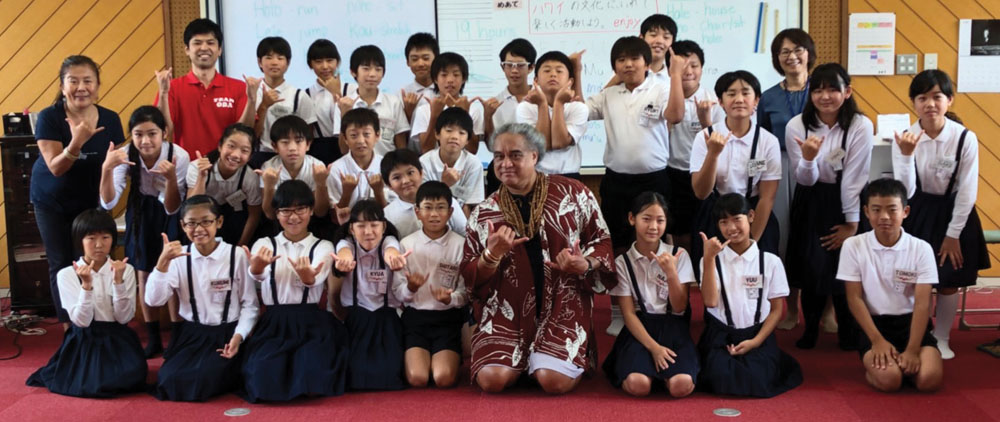
“I was excited. They were able to see the aloha, the culture, dance, chanting, all being revived. There is hope on the Mauna,” Keala says. “My students from Switzerland said, ‘Kumu, how can we help?’ and I told them, ‘Bring jackets.’”
Keala says students rounded up four suitcases of jackets, socks, and scarves, all things that were needed in wintertime Europe. “I was able to take it up there and present to the kūpuna,” says Keala. “When my students were given the opportunity to express their gratitude for what the culture has done for them, they really appreciated that.”
For the Japanese students, the concept was a little different. “What’s unique in Japan about their fascination with the Hawaiian culture boils down to their original spiritualism, Shinto, that they had before Buddhism, Christianity, and others,” he says. “They are able to understand the aloha spirit, the culture, tradition, and so forth.”
It’s Keala’s hope that his students will build global connections. “I say to my kids who travel with me, ‘If Hawai‘i gets sovereignty, you are making relationships with those countries. If you did not make this journey then they would have no idea who they could trust…We are far from sovereignty, but if we continue to educate and connect with people of the world, they will understand our culture, and our tradition, and they will support it.”
Kerri Kantor
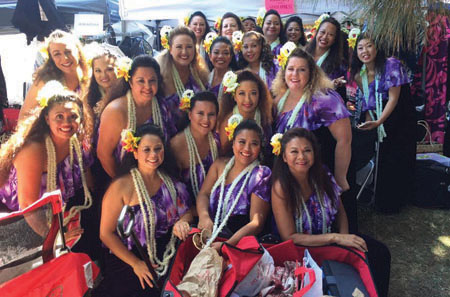
Kerri Kantor is an educational IT technician in San Diego; she’s also a student with Heali‘i’s Polynesian Revue, a well-respected hula school led by Kumu Hula Kathy Heali‘i O Nalani Gore-Stanley since 1967. Kerri joined the hālau in 2015, when she returned after 10 years on Hawai‘i Island.
Originally from San Diego, she grew up in a close-knit surfing community, where one of the neighborhood families was Hawaiian. “They had the lū‘au, kālua pig, all these plants and this giant plumeria tree. They would put the picnic tables out, order the ‘opihi, cook the pig in the backyard,” she says. “And one of them used to make me dance hula in the backyard…and I didn’t even remember that for years!”
That family had an important impact on her life. “They made me feel like this is my core. This is where I belong,” she says. Because of them, she always wanted to live in Hawai‘i but had to defer that dream. “Years later, the timing was right, so I went to Waimea on the Big Island and thought, ‘Oh my gosh.’ I was transformed. ‘I’m home.’”
She began studying hula, and admits it wasn’t easy at first. She remembers one particular class, about 2009, when she was trying to learn the kawelu (an advanced, scissors-like hula step). “I was stuck, my brain couldn’t grasp it. Then this huge memory came back…I realized this is what she was trying to teach me when I was little.” From then on things got easier.
“I’ve been back in touch with the family in the old neighborhood since I came back to the mainland. One of my early teachers saw me dance, and she told me I’m a beautiful dancer, and I realized I’d finally made it. I had a family. And I feel like that’s what the aloha spirit and Hawaiian culture is all about.”
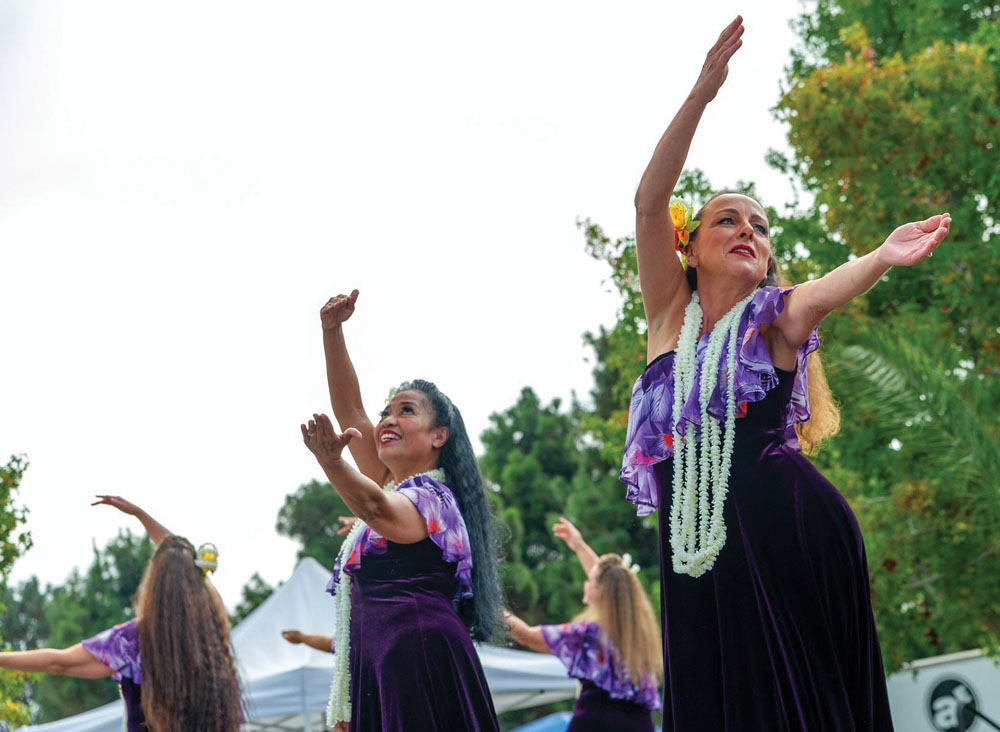
Kerri returned to California in 2012, and says she retreated from Hawaiian culture for a while because she was sad to leave. “After a couple of years, I wanted to start with a new hālau, but each time after class I got back to the car and bawled my eyes out. I heard things like, ‘We’re a California hālau, not a Hawaiian hālau,’ and ‘You’re from the Big Island? You won’t like this. We’re Kauai and O‘ahu style, small feet, little hips.’”
When she found Heali‘i’s hālau, she found her place again. “The first time made me cry, in a good way! I was so welcomed, so loved, so not judged,” she says. “This hālau is awesome. Before COVID we had 250 students, from age three up to the Hula Honeys, 70–80 years old. And the kāne are formidable. I was intimidated at first, but I’m so happy to be with them now.” ❖
Editor’s Note: This story was inspired by a reader from Belgium, Ronald Letayf, a massage therapist who was trained in lomilomi on Hawai‘i Island and Europe. Ronald is creating a Hawaiian Retreat Center and organic farm called Aloha ‘Āina in Delta del Ebre near Barcelona, Spain, where he can share a touch of the aloha spirit with those who visit.
For more information:
Kalim Smith: facebook.com/ipufarm
Kumu Keala Ching: nawaiiwiola.com and keolamagazine.com/people/kumu-keala-ching/
Kerri Kantor: healiis.com
